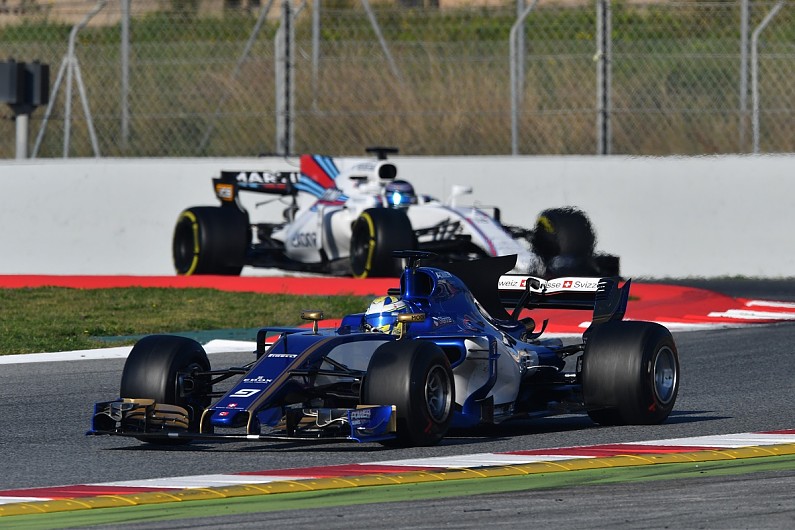Upgrade for free today
You have only 5 articles remaining to view this month.
Pirelli racing manager Mario Isola expects there to be a lot of track evolution across the first two days of Formula 1 pre-season testing following a resurfacing project.
The Barcelona circuit agreed to carry out modifications in order to ensure it remains on the 2018 MotoGP calendar, after its place had been under threat.
Earlier this month, work began with the entire circuit set to be resurfaced and the run-off area at Turn 13 extended.
With the first pre-season test at Barcelona scheduled to start on February 26, Pirelli plans to send a couple of engineers to the venue next week, once work is completed, so the tyre supplier can gather data.
“They [circuit officials] told me that the target is to make a Tarmac that is similar in terms of roughness to the old one,” Isola told Autosport.
“It is clear that it is not possible to have a new surface that is exactly the same, but that was the target.
“Usually we measure the Tarmac roughness on Wednesday before each event. The idea is that next week we send a couple of engineers to measure it to compare the old one with the new one.
“I know the circuit is planning to run many cars between when they finish the work and the start of the pre-season test to try to stabilise it as you have a lot of track evolution at the beginning because you have some oil, some bitumen and so on.
“There are some treatments you can do like high-pressure water and there are some machines that can clean a little bit of the first layer that is greasy.
“It is probably true that the first day of testing, or maybe couple of days, there will be a lot of evolution but then we should have consistent conditions.”
Pirelli has yet to announce the three compounds that will be available for this year’s Spanish Grand Prix, which takes place on May 13, with Isola suggesting the new asphalt will make that decision trickier.
“The problem is that maybe we need to reconsider the allocation because we select three compounds on each event depending on the Tarmac roughness, layout and the energy that’s going through,” he said.
“We have a database and we can select compounds based on all this information.
“Obviously if you have a complete change of Tarmac, like Sepang [in 2016] – they resurfaced the circuit and it was completely different from the past.
“Sepang was one of the most aggressive circuits and we had the opportunity to go one step softer after resurfacing.
“Jerez was the same, last year they resurfaced in October and we went there that month with F2 and GP3.
“Before the race we sent the engineers to measure the roughness, it was completely different, much smoother.
“We moved the allocation one step softer and it was not enough. Tarmac can make a big difference.”
